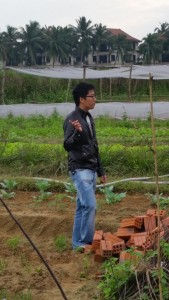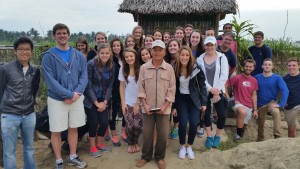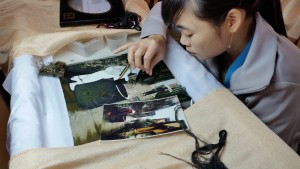While continuing my adventures in Vietnam, I am constantly surprised at the drastic differences in culture. A normal daily activity here seems worlds away from something I am used to in America. Traveling in Hoi An has opened my eyes up to the bluntness and openness of how food is served and supplied compared to the U.S. In America we are used to restaurants and stores hiding their kitchens or butchering their animals in another room. A customer never sees their raw meat or the head of the animal they are about to consume. It is custom to expect to be served a meal without any knowledge of what goes on behind the scenes. Vietnam is quite different. Freshly killed pigs are carried though the front door of a restaurant. Dogs running around the streets are expressed as tomorrow’s dinner. Chicken and ducks and strung in windows for display. As an American, all of these sights are alarming to me. There is a vast difference in culture and societal norm.
Seeing where your food comes from is an especially interesting topic for me to reflect on. I worked for four years in an organic food co-op that preached knowing where your food is grown, made and sold. The “farm to table” phenomenon is sweeping the US as people try to be more aware of what they are eating and straying away from highly processed and mass produces foods. People today claim to want to see where their livestock is grown to ensure it is being raised humanely and peacefully. They want to avoid mass produced, polluted and violent slaughterhouse atmospheres. Although Americans are seemingly obsessed with the wholistic free range trend, I am certain most of them would be horrified to watch their dinner being carried past them freshly killed.
It seems to me that the Vietnamese people have the right idea when it comes to obtaining your livestock right from the source. Animals are free to roam and live until they are killed swifts and immediately used for consumption. This emulates the farm to table mantra perfectly. It’s ironic though that Americans, the ones that preach organic and fresh livestock, would never accept this truly farm to table meal simply because of societal cures and social norms. An American would never watch their meat be killed and served so bluntly. It’s a contradictory lifestyle but an interesting realization to explore.
Welcome
-
Recent Posts
Recent Comments
Tags
 Follow
Follow


